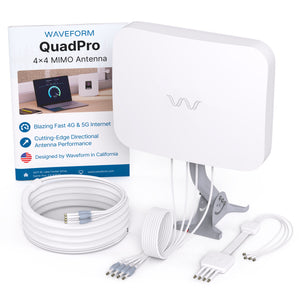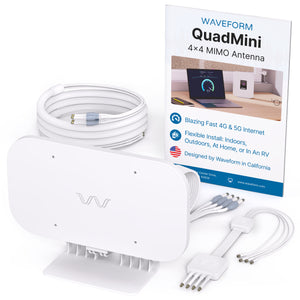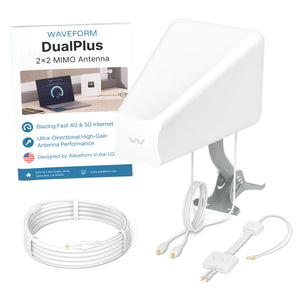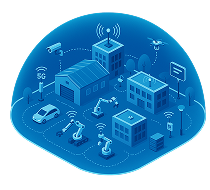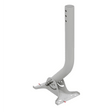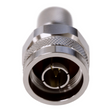A smart phone is an amazing bit of technology. Still, cell phone conversations and interactions can be frustrating. No sound, dropped calls, echo and other failings. We rely on our phones and cellular network devices to send and receive communications seamlessly. Weak signal transmission can result in missed information, dropped calls and financial transaction errors.
As we depend more and more on cellular technology, it is important that we understand some of its limitations. If we better understand the reasons for signal fluctuation we can prepare to address these situations. Fortunately, poor signal quality can be improved.
What causes weak signal?
Signal quality can vary whether you are calling while sitting, walking or driving. Buildings, tunnels, and terrain can impact the signal. But if you remain in one place they can be anticipated. Areas in your home or office are better than others for cell phone reception. Why is this?
Surroundings
We’ve touched on some of the types of obstructions to good signal quality such as hills and buildings but, building materials, position within the building, clouds, and even trees can all have an impact on your cell phone function. Yes, even the season of the year will change the signal depending upon whether or not the trees and shrubs have leaves. All of this must be considered when trying to improve your signal transmission.
Distance and direction to the nearest tower will have the greatest impact on your signal. You must be within range to use or continue to use your cell phone. Range can depend on a couple of factors, the power of the tower transmitter and the power of the transmitter in you cell phone.
Signal output from the tower is much greater than that of your phone. It is easier for your phone to hear the tower than it is for the tower to hear your phone. The output of your phone varies between 0.2 and 0.6 watts. Depending upon your location (metropolitan, suburban, rural) the tower can have an output of up to 3.0 watts. This is why you may see a signal strength of up to 5 bars on your phone but still not connect to carry on a conversation.
Tower direction is also a factor. The tower cells are put together much like a honeycomb in design. This is done to make some sense of the signal pattern and not have your conversation spread simultaneously across several towers. For this reason the power output of your phone will vary often up to the full 0.6 watts so you will be linked to one tower at a time. When you are mobile, one tower will transfer your call to the next tower. This transfer should not be problematic but we all know it can.
Another problem is a challenge with towers is the antenna intended to cover your location may not be the correct height or pointed in the correct direction. If your location had good reception and changed you must complain to your carrier because a technician may have unintentionally caused an antenna misalignment.
Obstruction
Your position within a building may also have an impact on the signal strength. For example, a metal roof or panel in the building will deflect the signals from the tower and can make it impossible for you to make or receive a call.
Weather
The operation of any cellular device is dependent upon the weather conditions. Wind, rain, lightening, and ice will all have a detrimental effect on the function of the tower. Once your call is received by the tower, it is sent on its way via computer connection. Software and connection problems can slow or stop the transmission. The programming in your phone may well have an intermittent failure due to weather.
Congestion
Towers serving a high call volume will also diminish signal quality, increase dropped calls and may cause a busy signal for the caller. Once you are linked to a tower, the transmission should be fine. But, if your call moves to a tower that is overloaded, the call will be dropped. Rush hour drive time is prime time for high volume cell tower usage. Sporting and large group events will also cause a delay in finding a tower with an open line.
SOLUTIONS
-
External Antenna
There are several antennas available for mobile, home and office applications. The antenna will improve your signal beyond geography and building obstructions, potentially double your range and decrease dropped calls. An antenna does not increase the output of your signal to the tower but it does help receive and transmit signals that might otherwise be lost due to obstructions.
-
Signal Booster
A signal booster will increase the output of your cell phone. The booster connects between your cell phone and an external antenna. It can be powered with the cigarette lighter in your vehicle or by using the AC/DC power adapter for your home or office power. The bi-directional signal for both transmission and reception will be increased. A booster can be used at home, in your office, or any vehicle (boat, RV, car).
-
Signal Repeaters
These units are necessary when an external antenna or signal booster will not resolve the problem. The repeater will pick up the signal of the cell phone and move it to an external antenna and transmit directly to the tower. Many convention centers are configured with this feature. Repeater systems work in office buildings, hospital, homes and on school campuses. Commercial, industrial and residential complexes can also benefit from signal repeaters.
written by, Oscar Castano, Absolute Wireless & Tom Hernandez, Waveform.com























